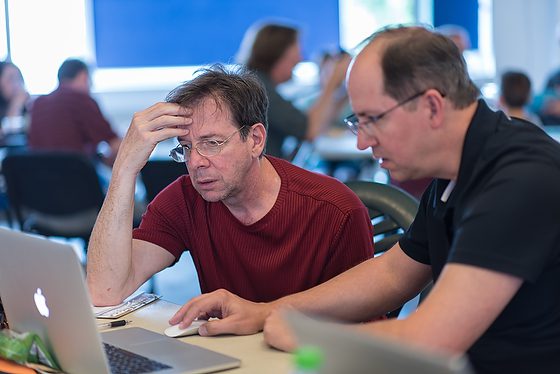My education courses were the best classes I took for my master’s degree.
While journalists need to know their subject well, they must also understand how persons learn to make the storytelling worthwhile.
While it is essential to help people with the knowledge, it is very limiting. Knowledge is at the base of learning. The starting point is where you memorize and recall information.
When you can take the pieces and create something new, this is when you are demonstrating you understand the content. You are demonstrating comprehension, expressing ideas in new forms, and even interpreting them.
You want to get to the highest level of understanding which is an application, which is the transfer of the learning to a new situation.
Now you may think this is all common sense, but I am finding that it isn’t for many in the communications industry.
One of the most significant issues I see with professional communicators is their lack of understanding that the content of the subject matter lacks exploration. While in this drawing, you know how the audience has different ideas in the presentation, I am finding out that many communicators, when they ask questions in the storytelling process with the subject, take what the issue says at face value.
They are unaware that what the subject is talking about isn’t how they understand their words.
When I was in Nicaragua, we had to have most students go back and clarify what the subject was talking about and not assume the content. They learned how to explore the topic and, in the process, learned how important this was to help the audience understand the problem across the cultural differences.
Watch this package that Naomi Harward produced this story on Alvaro Ramirez and his wife, Erica, who are helping children with the issues of alcoholism and how it is affecting their country of Nicaragua.
What is essential is that Naomi helped you through visuals and audio to understand how alcoholism affects the entire family and community.
Another student covered the medical volunteers and what they were doing. Saying that people have medical needs isn’t enough. By clarifying what type of services they provided, the audience will now understand we are talking about households with no medicine cabinet like we would in our homes here. When they buy aspirin, they don’t have the money for a bottle and buy it one tablet at a time.
Most of the students in the class were anticipating storytelling’s technical aspects as the biggest hurdle. They expected that learning how to use Adobe Premier was to be the most difficult to do.
Most realized pretty quickly that understanding a story and capturing all the elements needed for a good storyline was quite tricky. Before they could sit at their computers and start sequencing their video clips and photos, they had to have the content. The storyteller needed to be able to tell the story to the subject and ask if this was what they were saying.
There were Five Steps they had to understand about the problem to communicate to the audience.
When working for a nonprofit, the storyteller focuses on the call to action to the audience.
While teaching students storytelling, I am moving the students through all these stages of learning.
We show them all the microphones they can use for an interview. [Knowledge] We offer them how to record an interview. [Comprehension] Then, we send them to practice with each other, so they get clean audio and well-exposed video. [Application]
Once they go out into the field and do the actual interview, we review it with them. Together we talk about the issues that might exist. One that was pretty common was the wind noise. [Analysis]
After reviewing their interviews often, they go back to fix the problems. [Synthesis]
Near the end of the editing process, we ask them questions, and they evaluate their content and decide what they need to include or exclude to tell a compelling story. [Evaluation]
Now while this is what we are doing with the students to help them learn about storytelling, they are doing the same process of applying this to getting the audience engaged and understanding how they too can get involved in solving the problem of the story’s subject.
It is one thing to help people know about something and quite different to get them to understand how they need to be involved.
You need to know whether the audience knows more about the subject due to your story, or do they understand your topic and are taking action to do something about it?








